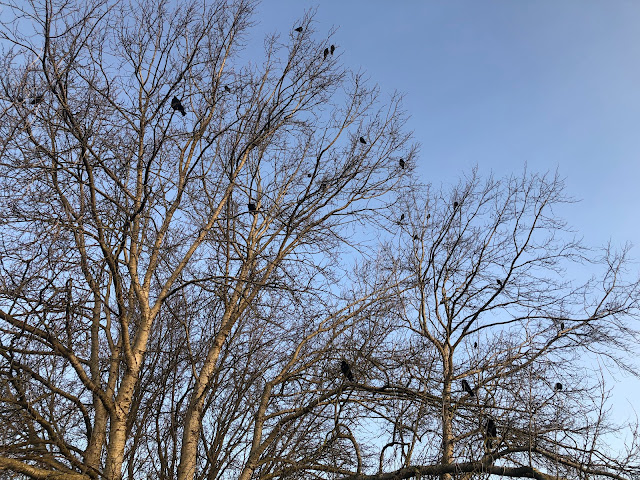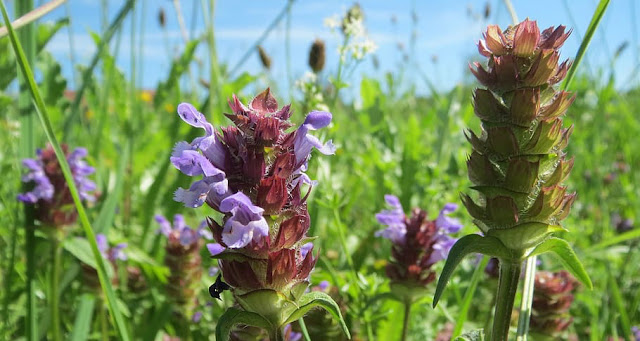 |
| A picture of my violets just because they are so beautiful |
What is going on in my veg garden? My laziness in the garden last year is producing some unexpected results in that some of the non-perennial plants have decided to regenerate and come back to life with renewed vigour. Hey, I’m not complaining!
I gave up on the garlic cloves planted last year; they just didn’t grow much. Too shady, too wet, too warm? I don’t know. Inexplicably, those same cloves started to grow again last month and currently stand at 10 inches of leafy growth. They seem to be behaving like shallots with several stems from each clove. Definitely one to watch.
Also last summer I left one of my purple sprouting broccoli plants to set seed as it had been a very good plant. I’m never hasty in removing the big plants anyway as the frothy yellow flowers are a magnet for bees and I think they look lovely.
In due course, having collected seed and cut back the stems, I noticed that the plant was still producing tiny shoots so I let it be. (Out of curiosity and because I had nothing to go into that space.)
That broccoli is now acting like a perennial; there are two tennis ball sized heads almost ready for harvest! Surely that’s not usual? In 15 years of veg growing here, I’ve never known a broccoli to behave this way - even continuing to sprout while it sets seed - but perhaps I’ve been too quick to clear the beds.
Elsewhere, the Jerusalem artichoke ‘fence’ is slowly being dismantled. As expected it produced both cheerful yellow flowers on tall stems and an abundant harvest of delicious tubers. Win:win.
I could leave it to regenerate but, when you get 20 to 50 tubers for each one planted, it’s quite the challenge getting through the 10 metres I grew last summer … even when I distribute the bounty among friends! So this year I’m opting for sense over sensibility and planting up just one smallish square of tubers - as well as some real sunflowers.
And lastly, one plant that I hope will continue in its new life is the Red Champagne rhubarb which I relocated. Yes, probably the wrong time of year to do that but in the ten years since I planted it near the fruit trees, the annual harvest has amounted to a couple of spindly stems. So here’s hoping that nature gives a lot of love to this little plant.
















